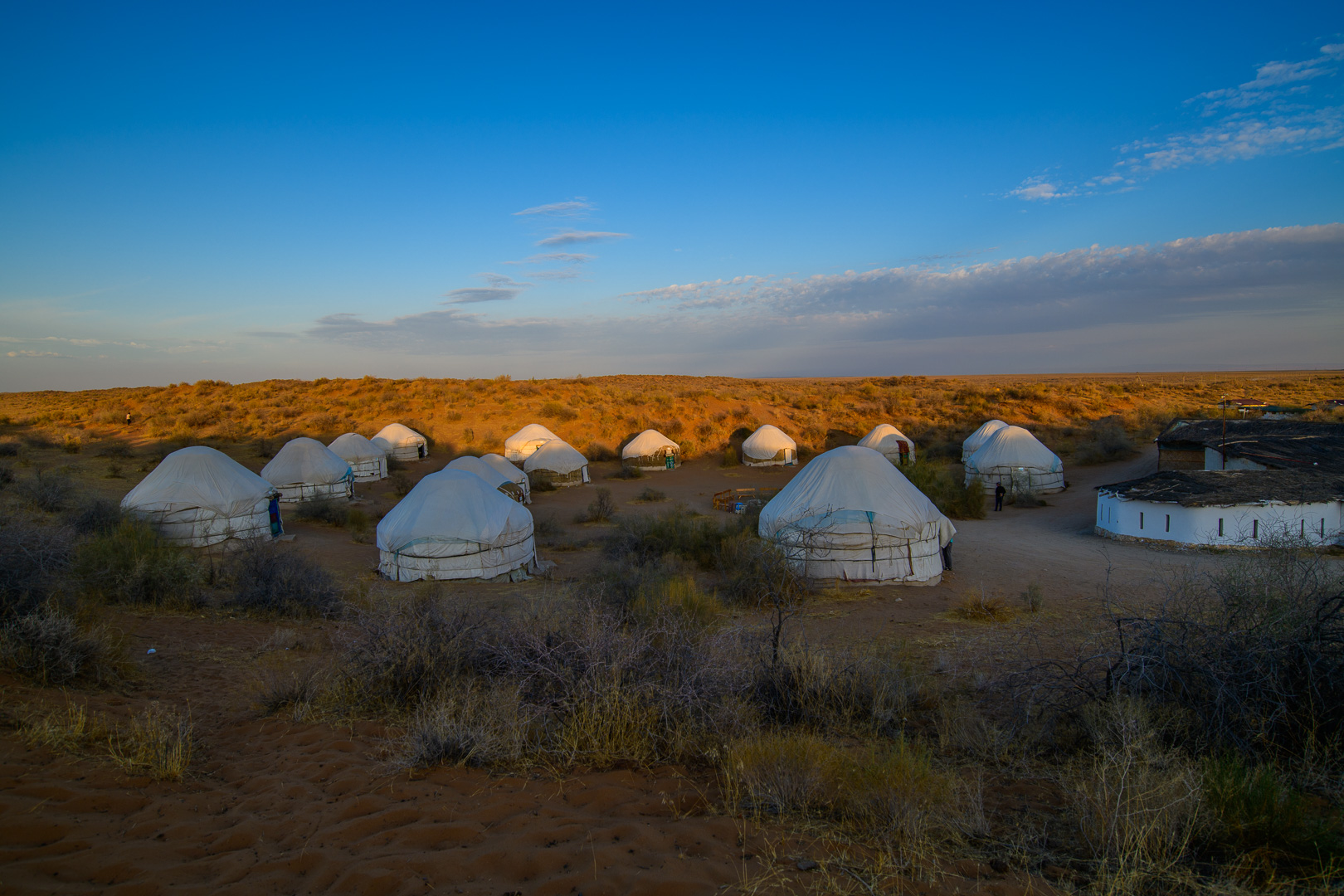
3rd./4th.October, Kysyl Kum Desert
Today we had a long drive with a few stops to get to our yurt in the Kysyl Kum desert. The weather was not as hot as it had been, which was probably a good thing. First we stopped at Gishduwan which is known for its ceramic manufacture and visited the workshops of the master potter Abdullah Aka which is run today by his family. I cannot say that I was impressed by his works and preferred the embroidery work which was also made there. We continued to Nurata and were given a short lecture about the holy Hasrat-Ali-Spring (Chashma) by a local expert. The whole complex had obviously been recently extensively renovated. There seems to be plenty of funds available for such things. As the drive proceeded the landscape became more and more desert-like and we eventually reached the yurt camp just as the sun was setting. At the yurts there were far more people than I expected (from 2 large busses) and I could not unfortunately go camel riding because of stomach problems. Not the best place to have it.
The next day we passed the very large Aydarkul Lake, stopping part way along it for a fish lunch and spending some time on the shore, although it was too cold for swimming. The road runs between the lake and the Nuratu Mountains (hills) which were our next destination. We arrived at a small brand-new hotel in the village of Sentob and occupied our rooms. These will be quite pleasant when the owner gets all the amenities working, even if some only have views onto a blank stone wall.
The Chashma Complex – Holy spring. Thousands of pilgrims from all over the world come to Nurata to visit a cult complex, well-known within the whole Asia, whose center is the holy spring (“chashma”). One of the legends runs that one day a meteorite, radiating light, hit the earth generating a spring where it fell and giving the water a healing property. This is the origin of the name “Nur” which means “Light”. The spring is located not far from the ruins of “Nur” fortress founded by Alexander the Great in the IV century BC, which are still of interest to archaeologists since it is one the most ancient monuments in the territory of Uzbekistan. Over the centuries the small city of Nurata arose around the spring which has now became one of the most visited Muslim sanctuaries in Central Asia.
Today, in addition to the spring, the complex includes a Juma mosque, bath-house, mazar and ancient mosque Panjvakta. Another element of the complex is the bath-house which was built early in the XX century by masters from Bukhara, presumably, replacing an ancient bath-house.
The Kysl Kum Desert, the name means Red Sand in Turkic, is the 15th largest desert in the world. It is located in the area between the rivers Amu Darya and Syr Darya, a region historically known as Transoxania or Sogdiana. It covers about 298,000 km2 and today is divided between Kazakhstan, Uzbekistan and Turkmenistan.
Riding on camels across the Kysyl Kum desert is today of widely popular. The Kyzyl kum is the most likely area of domestication of the Bactrian camel. The scientific name of the animal testifies to its Central Asian origin, as in ancient times the vast area along the middle and upper reaches of the river Amudarya was called Bactria. Petroglyphs depict the history of the domestication of camels.
Aydarkul lake has an area of 3000 square meters, a length of nearly 150 km and a width of from 10 to 20 km. The area around the lake is suitable for walks or rides on horseback or camelback. In early spring, when the lake is most filled with water, thousands of ducks, geese, pelicans and herons flock together here. Tourists can fish, swim and sunbathe.
















